Introduction – E-Commerce vs. Brick-and-Mortar
The last several decades have seen a significant change in the retail environment, mostly because of the rise and quick development of e-commerce. The argument between traditional e-commerce vs. brick-and-mortar retailers has become more heated as consumers increasingly rely on Internet platforms for their buying needs.
Understanding the distinctions between the two models is essential for both consumers and businesses, as each has specific benefits and drawbacks. 10 compelling parallels between e-commerce vs. brick-and-mortar will be examined in this post, highlighting the advantages and disadvantages of each strategy.
Accessibility and Convenience – E-Commerce vs. Brick-and-Mortar
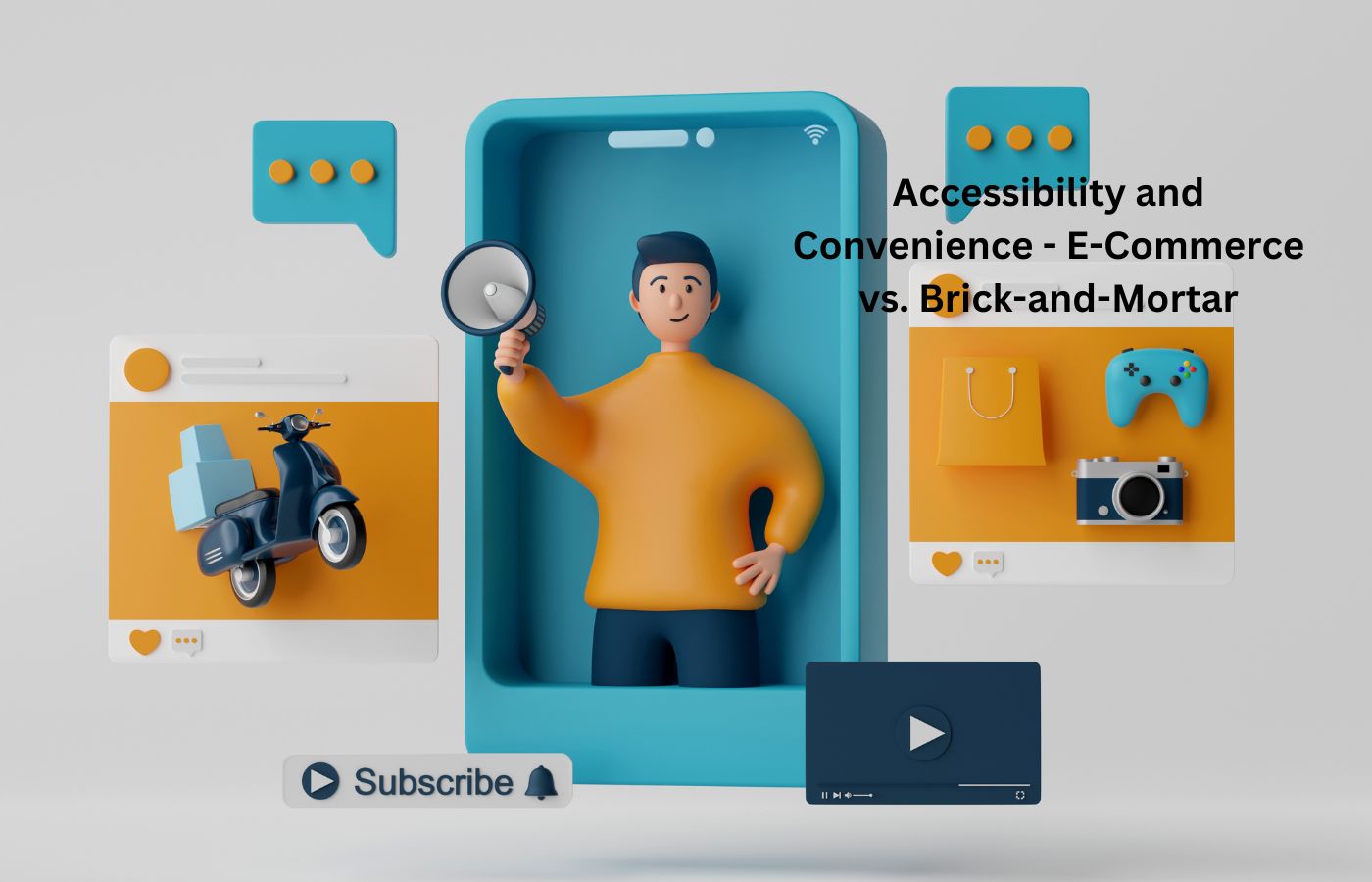
E-Commerce
E-commerce platforms provide consumers with unrivaled ease. Consumers have the ability to peruse and buy items from the convenience of their residences, at any hour of the day or night. The constant availability of this service is a notable benefit, particularly for individuals with demanding schedules or restricted physical mobility. In addition, e-commerce websites frequently offer features such as wish lists, tailored suggestions, and effortless search capabilities, enhancing the user’s buying experience.
Brick-and-Mortar
Contrarily, brick-and-mortar retailers necessitate clients to personally visit the establishment within designated hours of operation. Although it may appear to be less convenient, it has the benefit of instant pleasure. Customers have the opportunity to visually inspect, physically interact with, and test out merchandise prior to buying, which is especially crucial for things like as apparel, electronics, and furniture. Furthermore, the in-store experience can be enhanced through the aid of well-informed personnel who can offer tailored support and suggestions.
Cost Structure – E-Commerce vs. Brick-and-Mortar

E-Commerce
In general, operating an e-commerce business entails reduced administrative expenses in comparison to managing a physical retail location. Rent, utilities, and salaries for in-store personnel are among the expenses that are substantially reduced or eliminated. However, logistics, including shipping and handling, website development, and digital marketing are all expenditures that e-commerce companies must make.
Bricks and Mortar
Physical stores incur greater fixed expenses as a result of the requirements for physical space and in-store staff. Costs associated with rent, utilities, and maintenance can be considerable, particularly in highly desirable areas. Physical stores can benefit from foot traffic and impulse purchases, which can partially offset these increased expenses.
Market Reach and Customer Base – E-Commerce vs. Brick-and-Mortar

E-commerce
E-commerce’s power to reach people all over the world is one of its best features. Because online shops aren’t limited by location, they can reach a huge and varied group of customers. More sales and brand recognition can come from being able to reach people all over the world, especially for niche goods that might not have a big market in their own country.
Bricks and Mortar
The local focus of physical retail establishments may restrict their ability to penetrate the market. Nevertheless, by concentrating on the local community, this purchasing experience becomes more individualized and communal. By fostering consumer loyalty and repeat business, physical stores are capable of cultivating solid relationships with their clientele.
Marketing and Advertising – E-Commerce vs. Brick-and-Mortar
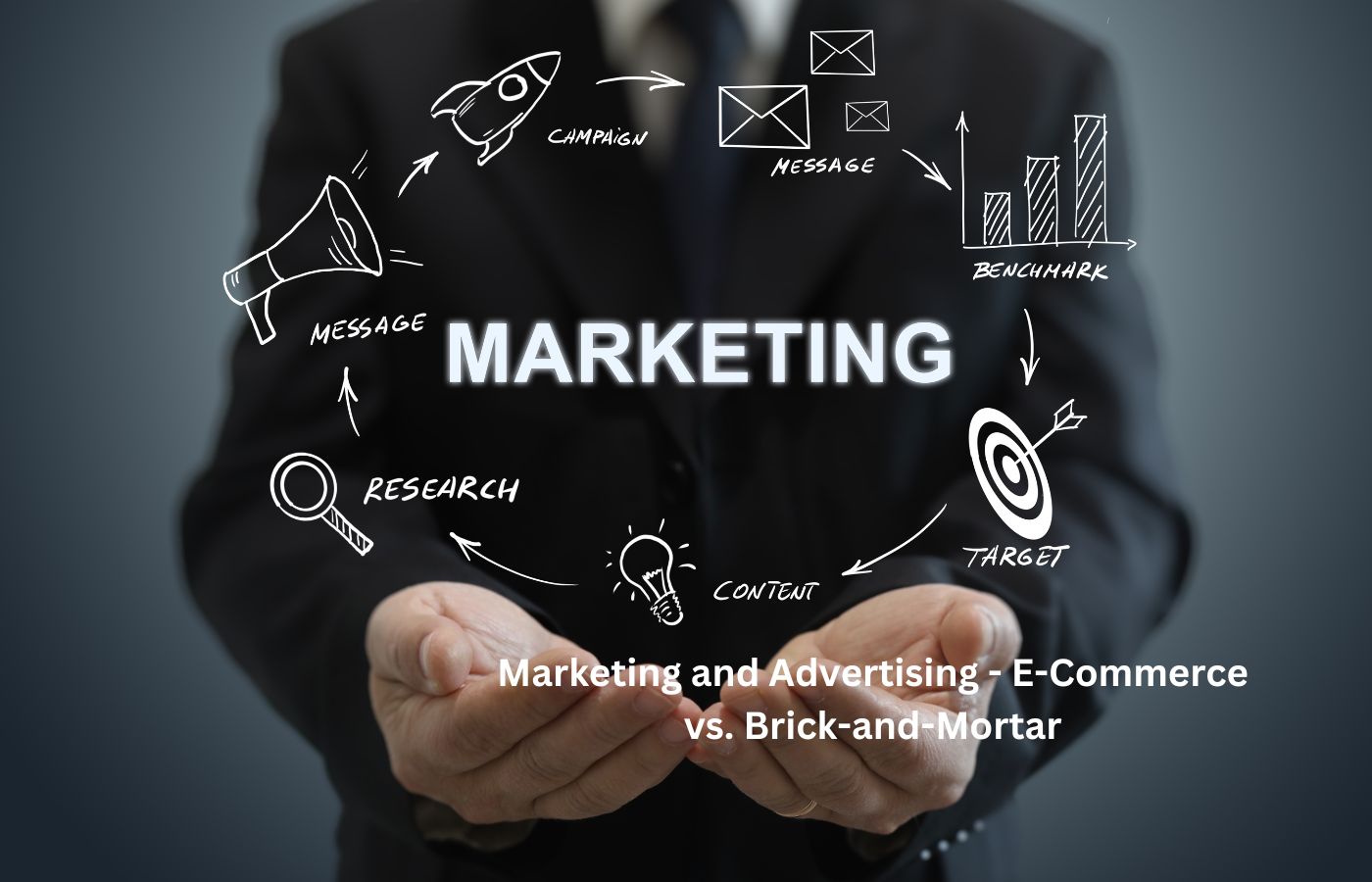
E-Commerce
E-commerce companies rely largely on digital marketing tactics to acquire and keep clients. Search engine optimization (SEO), pay-per-click (PPC) advertising, social media marketing, and email campaigns are popular methods for driving visitors to online retailers. These strategies can be quite effective, but they require ongoing effort and knowledge to produce results.
Brick-and-Mortar
Print advertising, radio, and television ads, as well as in-store promotions and events, are common types of marketing used by brick-and-mortar stores. While these methods can be effective in boosting local traffic, they may not have the same reach or measurable impact as digital marketing tactics. Physical stores, on the other hand, can benefit from experiential marketing by generating memorable in-store encounters that appeal to customers and generate word-of-mouth referrals.
Inventory Management – E-Commerce vs. Brick-and-Mortar

E-Commerce
E-commerce enterprises frequently use sophisticated inventory management systems to monitor stock levels, manage orders, and estimate demand. These systems can be connected with other company processes to improve efficiency, such as accounting and customer relationship management (CRM). However, e-commerce enterprises must deal with issues including stockouts, backorders, and the difficulties of processing returns and exchanges.
Brick-and-Mortar
On-site inventory is common in brick-and-mortar retailers, allowing things to be available immediately. This might be a big advantage for shoppers who want to take their products home straight immediately. However, controlling in-store inventory can be more time-consuming and prone to problems such as overstocking or understocking. Physical stores may also have issues with shelf space and product placement.
Customer Experience – E-Commerce vs. Brick-and-Mortar
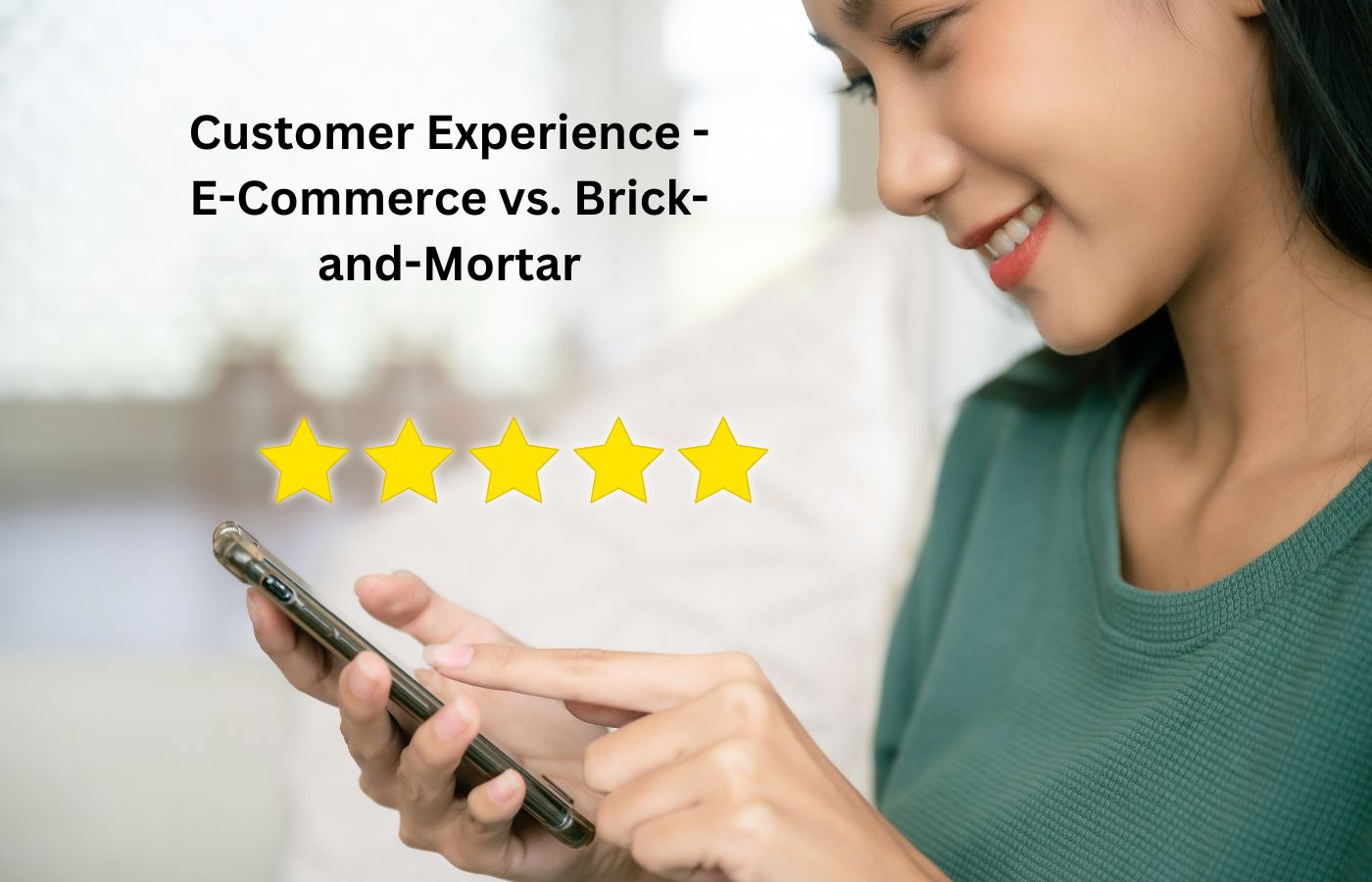
E-Commerce
The e-commerce customer experience is mostly influenced by the website or app’s design and functionality. To ensure consumer satisfaction, it is crucial to have a user-friendly interface, quick loading speeds, and reliable payment methods. Moreover, the inclusion of consumer evaluations, comprehensive product descriptions, and top-notch photos can augment the overall online purchasing experience. E-commerce enterprises should focus on customer care by providing various help channels, including live chat, email, and phone.
Brick-and-Mortar
The customer experience at physical retail outlets is influenced by the tangible surroundings and the interactions with the staff. An orderly and meticulously arranged store design, visually appealing showcases, and attentive customer care can contribute to a favorable shopping experience. Customer happiness can be further enhanced by in-store promotions, events, and individual service. Nevertheless, physical retail businesses must also confront obstacles such as extended queues at the cash register, restricted product availability, and the necessity for frequent staff education.
Pricing and Discounts – E-Commerce vs. Brick-and-Mortar

E-Commerce
E-commerce enterprises frequently have greater pricing flexibility and can entice customers by offering attractive discounts and promotions. Flash sales, loyalty programs, and targeted discounts are frequently utilized to increase sales and encourage repeat business. In addition, e-commerce platforms can use data analytics to enhance pricing tactics and adapt offers to specific customers.
Brick-and-Mortar
Brick-and-mortar stores may incur additional costs, limiting their capacity to provide deep discounts. They can still attract customers with in-store marketing, seasonal deals, and special offers. Physical stores can also create a sense of urgency and excitement by hosting limited-time events like pop-up shops. While pricing flexibility is limited, brick-and-mortar stores can benefit from the immediacy and tangibility of the purchasing experience.
Security and Fraud – E-Commerce vs. Brick-and-Mortar
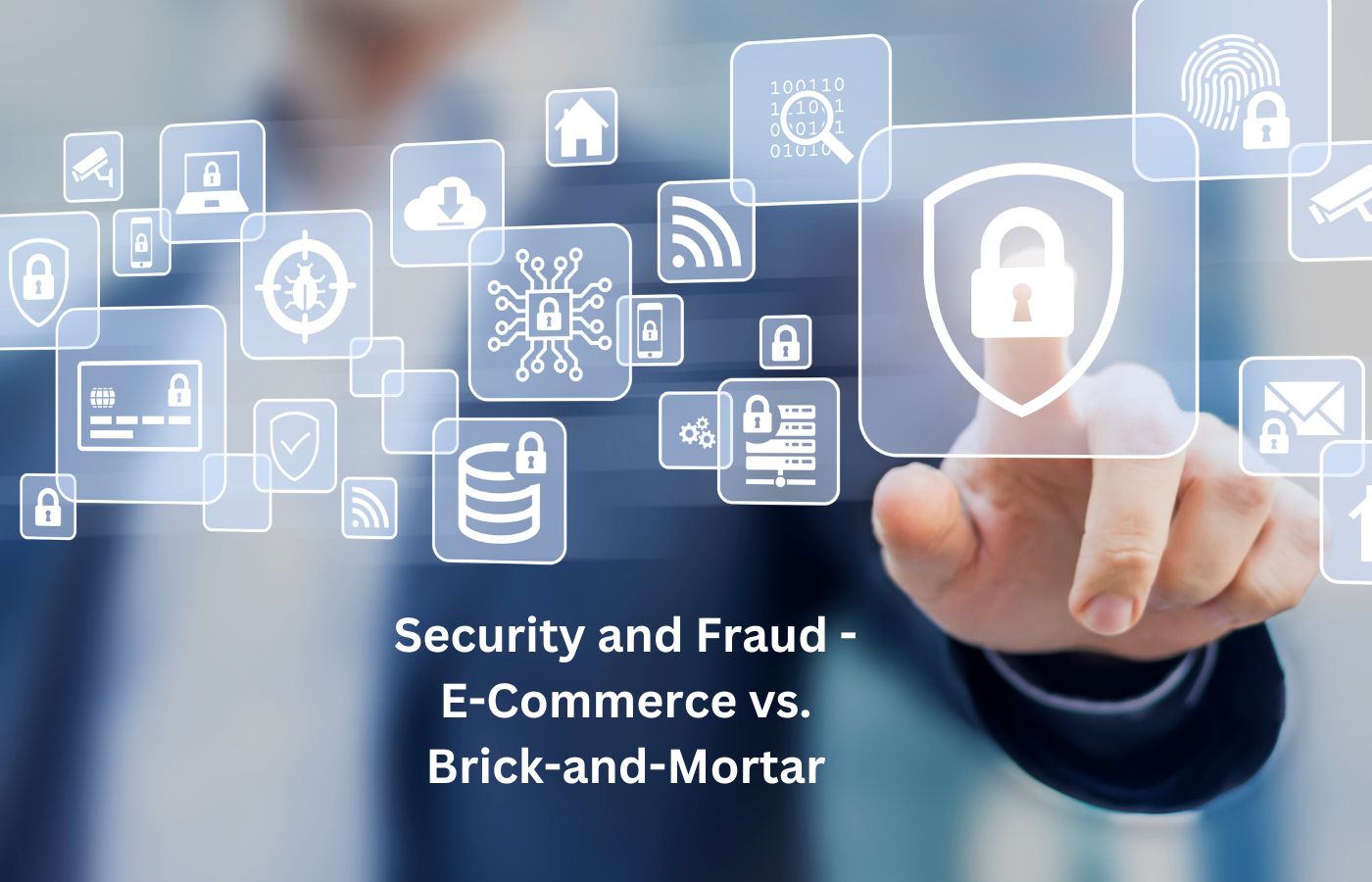
E-commerce
E-commerce enterprises face a crucial imperative to safeguard sensitive client information, including payment particulars and personal data, due to security concerns. To prevent data breaches and fraud, it is crucial to implement strong security measures, including encryption, secure payment gateways, and frequent security audits. E-commerce enterprises must also remain attentive in guarding against cyber dangers, including phishing assaults and malware.
Brick-and-Mortar
Stores with real walls and floors have to deal with different security problems, like shoplifting, staff theft, and fake money. To keep things safe and stop theft, it’s important to put in place real security measures like surveillance cameras, security tags, and loss prevention staff. Stores must also make sure that their customers and employees are safe by following fire safety rules and being ready for emergencies.
Environmental Impact – E-Commerce vs. Brick-and-Mortar
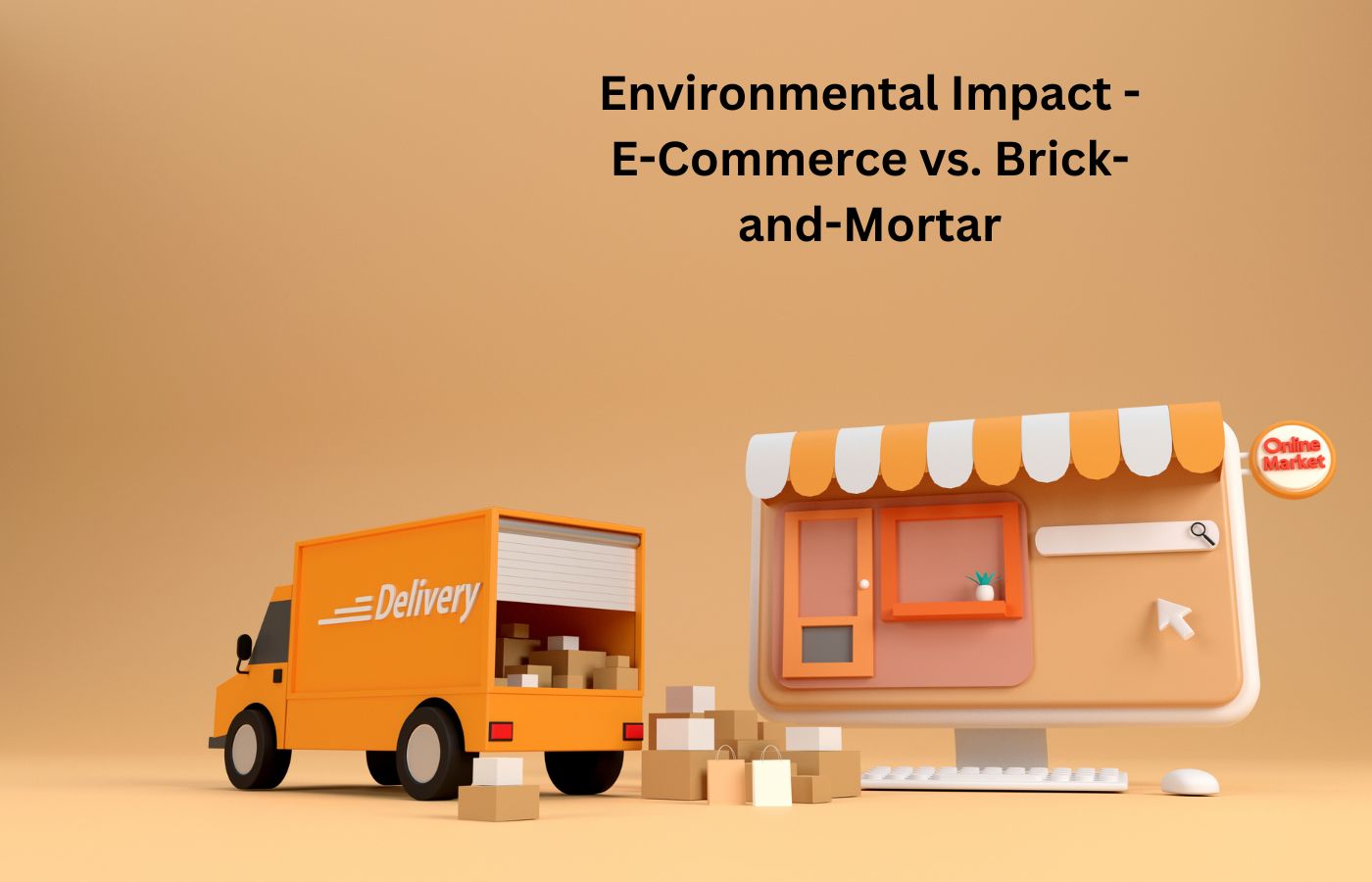
E-commerce
In some ways, e-commerce businesses can be better for the earth. For example, they may use less energy than physical stores. But e-commerce does leave a small but noticeable mark on the environment through the trash that comes from packing, the pollution that comes from shipping, and the power that data centers use. E-commerce can have less of an effect on the environment if it uses sustainable practices like eco-friendly packaging, shipping choices that don’t add to carbon emissions, and data centers that use less energy.
Brick-and-Mortar
Brick-and-mortar stores have a direct effect on the world because they use energy for things like lighting, heating, and cooling. Not only do people move, but also the goods that are brought to and from stores add to carbon emissions. However physical stores can lessen their effect on the environment by using sustainable practices like lighting that uses less energy, programs that cut down on waste, and helping out local suppliers.
Adaptability and Future Trends – E-Commerce vs. Brick-and-Mortar

E-Commerce
The e-commerce business is highly versatile and evolves in response to technology improvements. Artificial intelligence (AI), augmented reality (AR), and blockchain technologies are transforming the online buying experience. AI can improve personalization and customer service, whereas AR enables users to visualize things in their own environment. Blockchain technology can increase supply chain transparency and security. E-commerce companies that remain ahead of these developments can preserve a competitive advantage in the marketplace.
Brick-and-Mortar
Physical stores must also adapt to shifting consumer tastes and technology improvements. Integrating digital technology such as smartphone apps, in-store kiosks, and contactless payment systems can improve the shopping experience and simplify operations. Furthermore, the emergence of omnichannel commerce, which mixes online and offline channels, enables physical retailers to capitalize on the advantages of both models. Brick-and-mortar retailers may remain relevant and competitive in an ever-changing retail world by embracing innovation and remaining attentive to client needs.
Conclusion – E-Commerce vs. Brick-and-Mortar
E-commerce vs. brick-and-mortar are two very different business models with unique benefits and drawbacks. The argument is complex. While brick-and-mortar stores offer instant satisfaction, individualized attention, and a real shopping experience, e-commerce offers unmatched convenience, worldwide access, and price flexibility. For companies trying to negotiate the retail scene and for customers making wise purchases, knowing these distinctions is essential.
The distinctions between e-commerce vs. brick-and-mortar are getting more and more hazy as the retail sector develops. The emergence of omnichannel retailing—the combination of online and offline channels—is evidence of how well these approaches work together. Through the combination of e-commerce vs. brick-and-mortar, companies may offer a comprehensive and smooth shopping experience that satisfies the wide range of demands of modern customers.
Retail’s future is ultimately found in creativity and adaptation. Modern technology, environmentally friendly procedures, or customized client experiences are just a few of the ways that companies must always change to be competitive in the always-shifting retail industry. Retailers can prosper in a world growing more connected and dynamic by embracing the special benefits of both brick-and-mortar and e-commerce.
#e-commercevsbrickandmortar
[rank_math_rich_snippet id=”s-cb401daf-9a1e-469b-95c4-5bd510349042″]
Digital Marketing Services , SEO and E-Commerce Solutions in Delhi, India
Author – Farhanul Haque
This article is written by the Founder of Digitamizer who has been working in the e-Commerce Sector Since 2006 and is also a certified Digital Marketing Professional from IIT, Delhi, India.
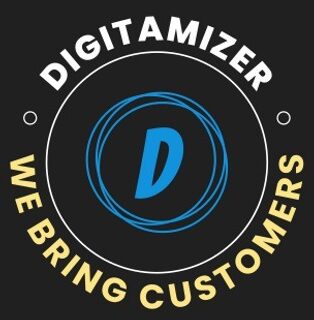
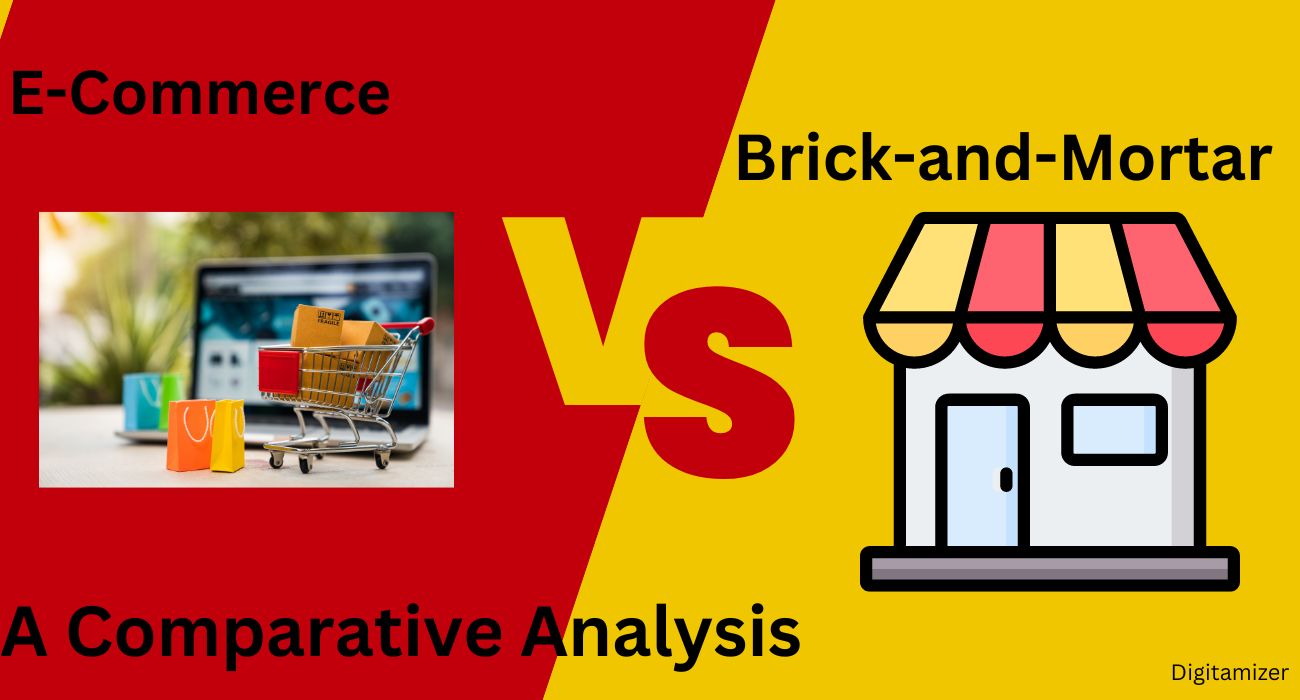
Really insightful post! I appreciate the clarity and depth you provided here.
I don’t think the title of your article matches the content lol. Just kidding, mainly because I had some doubts after reading the article.